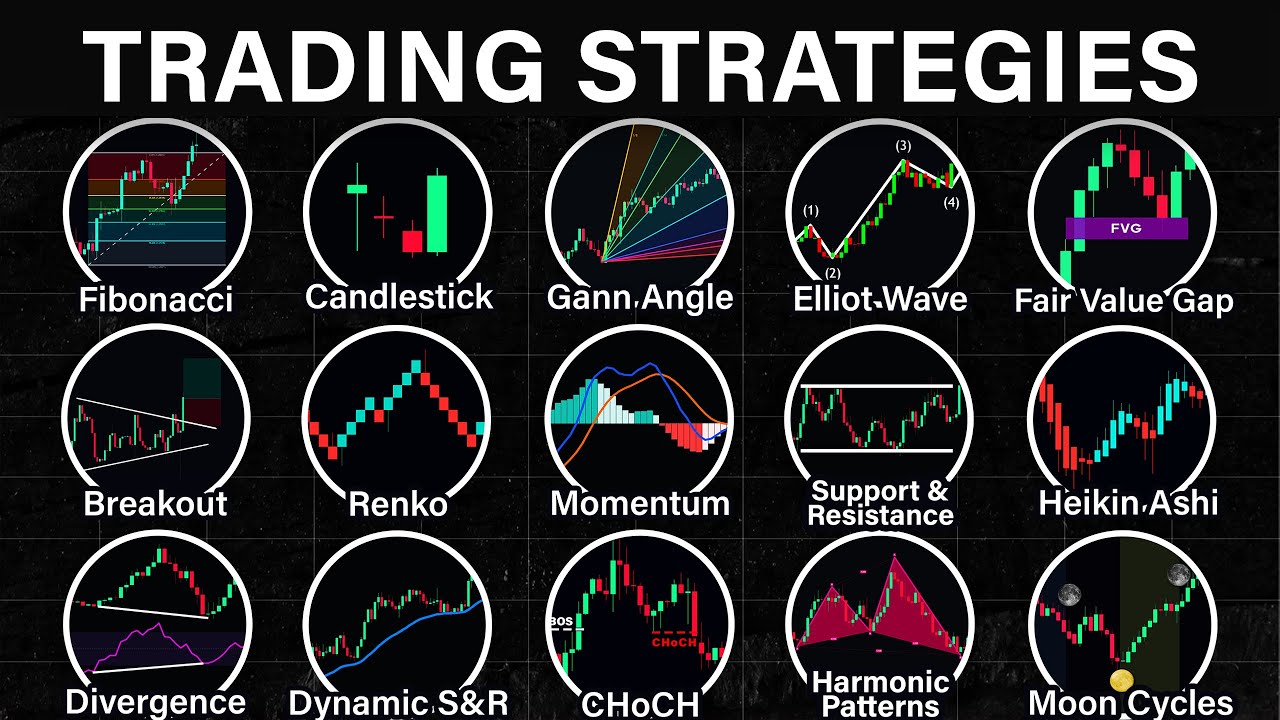market trend analysis strategies
Summary
TLDRThis video provides a deep dive into advanced market analysis techniques, focusing on channel and box theory to predict market trends. It highlights the importance of identifying key levels for breakout and retests, such as the 'F 30' level and 'Free Pass.' The speaker explains how understanding these concepts helps traders pinpoint entry points and manage momentum shifts effectively. With practical insights into applying these theories, the video offers valuable strategies for navigating market fluctuations and optimizing trading decisions.
Takeaways
- 😀 Channels and price levels are essential tools for tracking market movements and predicting potential trends.
- 😀 Breakouts occur when the price moves past a significant level, signaling a change in the market direction.
- 😀 Box Theory involves drawing a box between support and resistance levels, with the breakout and retest of these levels providing critical insights into price action.
- 😀 F levels, such as F30, represent specific Fibonacci retracement levels that traders use to identify entry and exit points.
- 😀 The concept of 'Free Pass' refers to a scenario where the market breaks past a key level and continues in the new direction without retracing.
- 😀 The speaker emphasizes the importance of market momentum, noting that slow market movements tend to invite changes while fast movements signal more stable trends.
- 😀 Properly following channels, as shown through specific examples, helps in tracking price action over time.
- 😀 Traders should focus on both the breakout and retest of key levels to make informed trading decisions.
- 😀 Understanding the significance of retracement areas, such as the bottom and top points in the box theory, is crucial for making accurate predictions.
- 😀 Trading should be done when the price crosses key levels in the expected direction, with careful attention to whether the market passes through or bounces from these levels.
Q & A
What is the primary focus of the video?
-The primary focus of the video is to explain advanced trading strategies, including the use of channels, box theory, and price action, to predict market movements and make informed trading decisions.
What is a channel in trading, and how is it used?
-A channel is a price range marked by two parallel lines that define support and resistance levels. Traders use channels to track market trends and predict potential reversals or breakouts when the price interacts with the channel's boundaries.
What is box theory, and how does it relate to trading?
-Box theory involves creating a 'box' between key support and resistance levels, which helps identify important price zones. The market’s movement through these zones can indicate potential breakouts or reversals, guiding trading decisions.
How are trap areas important in the context of trading?
-Trap areas refer to price zones where the market might initially move in one direction but then reverses sharply. Identifying these areas is crucial as they often signal entry or exit points, and understanding them helps traders avoid false moves.
What is meant by a 'free pass' in trading?
-A 'free pass' occurs when the market moves past a key level, indicating that the trend is likely to continue in that direction. The concept is applied when the price breaks through important levels such as support, resistance, or F-levels.
What are F-levels, and how do they influence market decisions?
-F-levels, such as F30 or F50, are predefined price levels used to track significant points of support or resistance. These levels help traders assess market momentum and potential breakout points to make informed trade entries.
How does the speaker explain the role of retests in trading?
-Retests occur when the market revisits a previously broken support or resistance level. The speaker emphasizes that retests are important as they confirm whether the new trend is valid or if the price will reverse, providing better trade opportunities.
What does the speaker mean by 'market momentum' and its different types?
-Market momentum refers to the speed of price movement. The speaker categorizes momentum into slow, medium, and fast conditions, explaining that slow momentum invites changes, while fast momentum tends to consolidate or pause, offering different trading opportunities.
What is the significance of breakouts in trading strategies?
-Breakouts occur when the price moves beyond key support or resistance levels. These events are significant as they often signal the beginning of a new trend. Traders use breakouts, along with retests and F-levels, to identify opportunities to enter trades.
How should traders use the F30 level in their trading decisions?
-Traders use the F30 level as a critical point for confirming whether a breakout will hold. If the price moves past this level and maintains momentum, it’s considered a 'free pass,' suggesting that the market is likely to continue in that direction.
Outlines

This section is available to paid users only. Please upgrade to access this part.
Upgrade NowMindmap

This section is available to paid users only. Please upgrade to access this part.
Upgrade NowKeywords

This section is available to paid users only. Please upgrade to access this part.
Upgrade NowHighlights

This section is available to paid users only. Please upgrade to access this part.
Upgrade NowTranscripts

This section is available to paid users only. Please upgrade to access this part.
Upgrade NowBrowse More Related Video

The Simplest Way to Use & Trade Elliott Waves (Changes Everything...)

Advanced Market Structure Simplified | ICT

Linhas de Tendência

ICT Mentorship Core Content - Month 04 - ICT Rejection Block

Oil and RATIOS, DECLINE Copper, OIL FV $87, GOLD Long TERM, Unemployment UP, OIL Tanker SET UP

Every Trading Strategy Explained in 12 Minutes
5.0 / 5 (0 votes)